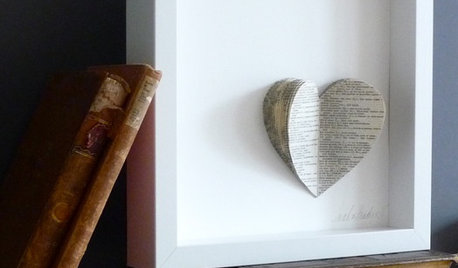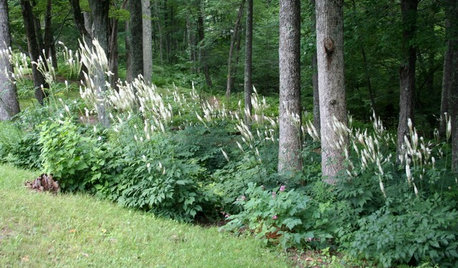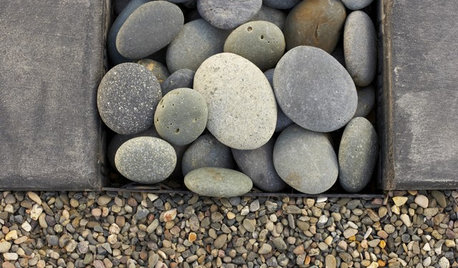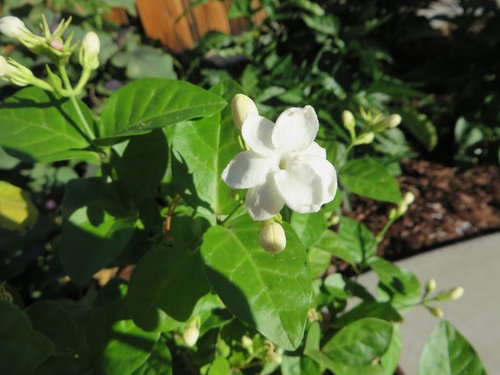Rooting hormone
Pyewacket
9 years ago
Featured Answer
Sort by:Oldest
Comments (36)
muscadines978
9 years agocooperdr_gw
9 years agoRelated Discussions
Are basil cuttings rooted with rooting hormone safe?
Comments (4)Of course! Why wouldn't they be? If you're worried about it, however, next time just use pure honey instead of rooting hormone. To make rooting hormone soak the yellow-tipped shoots of a weeping willow tree in water. A tea made from the bark of a willow tree is also effective. When using the shoots or bark soak them for 24 hours prior to using. Rooting hormone is usually sold as indole butyric acid (IBA). It simply encourages the cuttings to form new roots....See Morerooting and rooting hormone
Comments (5)I made several hardwood cuttings of Vitex agnus-castus (Chaste Tree) on November 8, 2007. They were then dipped in Green Light Rooting Hormone (purchased at Lowe's)and placed in styrafoam cups of 1/2 peat moss and 1/2 perlite mix, watered, and placed in a plastic zip-lock bag. First growth appeared November 21, 2007. Since then several cuttings have sprouted new leaves. As an experiment I cut several more today and repeated the process. I'll check them in a few weeks. I will try to cut a few more pieces some time in December and repeat the whole process. Needless to say there are no leaves on the plant at this time. The cutting are 3 to 4 inch pieces from a 12 inch branch. They are in the laundry room (no direct sun)on a shelf with a 60 watt bulb left on 24/7 temperature is a constant 70F +/- 5F...See MoreRooted Plumerias + Rooting Hormone?
Comments (2)Most rooting hormone products contain anti-fungal ingredients. May help shouldn't hurt, but not necessary for rooted plants....See Moreyear old cutting, no roots recut and retreat with rooting hormone?
Comments (6)Hi Plant Nut - look at the beautiful claws on that cutting!! And from what you are describing about your cutting...I really think it will root. I've had similar experiences. I do get triple digit temperature where I live and so I root all my cutting in shaded area. Otherwise it will get sunburn from heat radiating from the top of the soil. Good luck on your large cutting. Don't give up. ~Kasie...See MorePyewacket
9 years agodavid52 Zone 6
9 years agoPyewacket
9 years agoclarkinks
9 years agotete_a_tete
9 years agojay83
9 years agothunderbear48
9 years agocooperdr_gw
9 years agoloewenzahn
9 years agothunderbear48
9 years agotete_a_tete
9 years agoloewenzahn
9 years agotete_a_tete
9 years agoloewenzahn
9 years agomuscadines978
9 years agoSans2014
8 years agomuscadines978
8 years agoSans2014
8 years agomuscadines978
8 years agozzackey
8 years agoSans2014
8 years agozzackey
8 years agotete_a_tete
8 years agotete_a_tete
8 years agotete_a_tete
8 years agomuscadines978
8 years agopeter_out
7 years agomuscadines978
7 years agopeter_out
7 years agolast modified: 7 years agomarcfevans
7 years agolast modified: 7 years agomuscadines978
7 years agomarcfevans
7 years agomuscadines978
7 years ago
Related Stories

HOUSEPLANTSHow to Force Amaryllis Bulbs Indoors
Enjoy vibrant red blossoms even as gardens turn snowy white, by teaching this hardy repeat performer to ignore the calendar
Full Story
FRUIT TREESHow to Grow Your Own Juicy Plums
Easier than other stone fruits and with a variety of colors to choose from, plums are a versatile garden addition
Full Story
HOUSEPLANTSPlay Up Some Fiddleleaf Figs for a Lively Indoor Tune
Strike a dramatic chord in a minimalist scene or a country note in a rustic setting — fiddleleaf fig plants harmonize with any style
Full Story
DECORATING GUIDESSay 'I Do' to Beautiful Wedding Memory Displays
You'll love and cherish these creative vignettes, artwork and more that keep the happiness of your special day at hand
Full Story
GARDENING GUIDESGreat Design Plant: Actaea Racemosa
Elegant flowers top black cohosh in summer woodland gardens
Full Story
GARDENING GUIDESMake Sure You Read This Before Buying New Plants
Follow these 10 plant-selection tips to avoid buyer’s remorse
Full Story
MOST POPULARThe Perfect Houseplant for People Who Kill Houseplants
If you can fill a jar with water, you can keep golden pothos vine happy — and it will pay you back with cleaner air and a greener home
Full Story
HOUSEPLANTSMeet a Houseplant With Excellent Communication Skills
It droops when thirsty, revives quickly and thrives under fluorescents. You may want to hire this hard worker for both home and office
Full Story
LANDSCAPE DESIGNThe Right Stone for Your Garden Design
Gravel, pebble, cobble and paddle: Stones vary in size and shape, and have different uses in the landscape
Full Story
GARDENING AND LANDSCAPINGHow to Make a Pond
You can make an outdoor fish paradise of your own, for less than you might think. But you'll need this expert design wisdom
Full StorySponsored
More Discussions




PyewacketOriginal Author